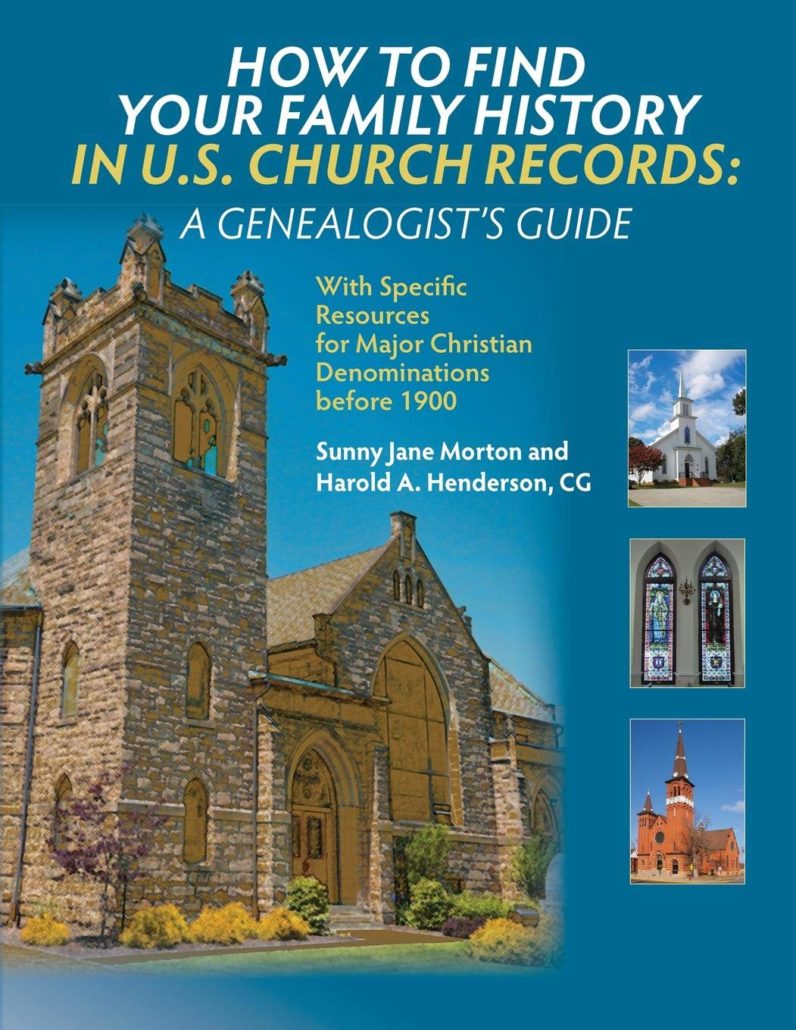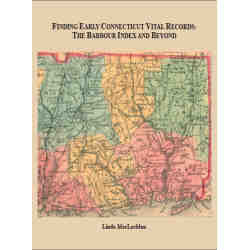
Sunny Morton and Harold Henderson’s book, How to Find Your Family History in U.S. Church Records: A Genealogist’s Guide, continues to receive accolades in the genealogical media. In the December 2019 issue of the prestigious National Genealogical Society Quarterly, reviewer Robert Johnson calls the book “a great addition to many personal libraries.” Anne Lowery, writing for the members of one of our largest genealogical societies in Ohio Genealogy News’ Winter 2019 issue, notes that “This work focuses on an underutilized resource for family historians . . . . This peer-reviewed publication offers a step-by-step guide through identifying, locating and gaining access to these unique sources . . . The authors worked with over 30 archivists, historians and genealogical experts in specific faith tradition to create this guide.”
The NGSQ review is published below in its entirety.
How to Find Your Family History in U.S. Church Records: A Genealogist’s Guide. By Sunny Jane Morton and Harold A. Henderson, CG. Published by Genealogical Publishing Co., Inc.; 3600 Clipper Mill Road; Suite 229; Baltimore, MD 21211; ISBN 978-0-8063-2095-3. ix, 143 pp. Illustrations, index. Paperback. $29.95.
Morton and Henderson have, with great competence, taken on the daunting task of guiding readers through the complexities of Christian denomination histories and records management in the United States. The book is divided into two parts. Part one covers the what and how of church record research. Part two has twelve sections with specific information for researching the records of the larger Christian denominations.
This book does not replace works such as Virginia Humling’s US. Catholic Sources: A Diocesan Research Guide for Family Historians. Instead, it assists a reader in identifying probable religious affiliations for an ancestor and points to likely record sources if the ancestor’s religion is already known. The work serves as a jumping off point to further research.
This is without question an enormous topic: entire books have been, or need to be, written for each denomination. Coverage for some denominations is thin, and many Christian denominations, not to mention non-Christian faiths, are omitted entirely. The authors recognize the book’s limitations and challenge “others to extend and improve upon this work” (p. vii). Until more authors take up the challenge, this work serves as a great entree into the topic.
The book shines in its descriptions of various denominations by cutting through the needlessly complex organizational background information that often mires denominational histories. It presents solid overviews of record types one can expect to find for each denomination, and lays a solid foundation for those wanting to plunge deeper into a denomination’s history.
A mere quibble is the lack of a brief but broad historical overview of religion in the United States, which might aid understanding of an ancestor’s religion in the greater context of U.S. church history. It may also help readers better understand the work’s passing references to such pivotal events as the Second Great Awakening.
A reader’s desire for more from the authors is not a critique of the book as much as a validation of the quality and value of this excellent work in an area of research that needs more such books. This will be a great addition to many personal libraries.
Robert Johnson, JD, CG
Minneapolis, Minnesota
Bob@NordicFamilyHistory.com




